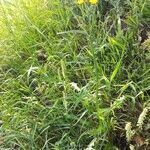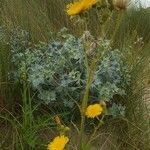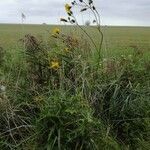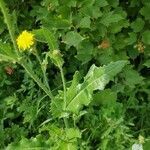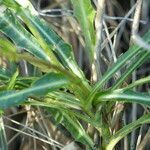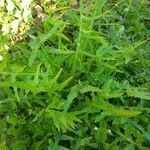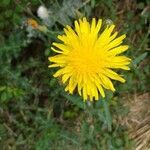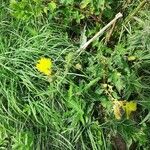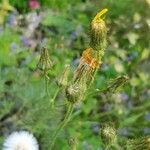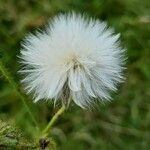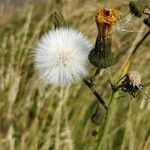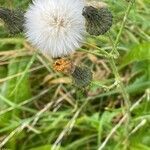Perennial, 4–20 dm, with long vertical roots and spreading by creeping roots, glabrous at least below the infl and often somewhat glaucous; lvs prickly-margined, the lower and middle ones usually pinnately lobed or pinnatifid, 6–40 × 2–15 cm, becoming less lobed and more auriculate upward, the upper reduced and distant; heads several in an open-corymbiform infl, relatively large, 3–5 cm wide in fl; fls ca 150–235 per head; fruiting invol 14–22 mm; achenes 2.5–3.5 mm, with 5+ prominent ribs on each face, strongly rugulose; 2n=36, 54. A European weed, now widely intr. in temperate N. Am. July–Oct. Var. arvensis is ± copiously provided with coarse, spreading, gland-tipped hairs on the invol and peduncles. Var. glabrescens (Günther) Grab. & Wimm. lacks these hairs. (S. uliginosus)
A coarse spiny herb. It grows 25-115 cm high. The lower leaves have backward pointing lobes. They are prickly along the edge. The leaves are 10-25 cm long. The upper leaves have less lobes and do not have leaf stalks. The flowers are yellow disks. Several flower heads occur together in open clusters. The fruit is a dry flattened achene.
